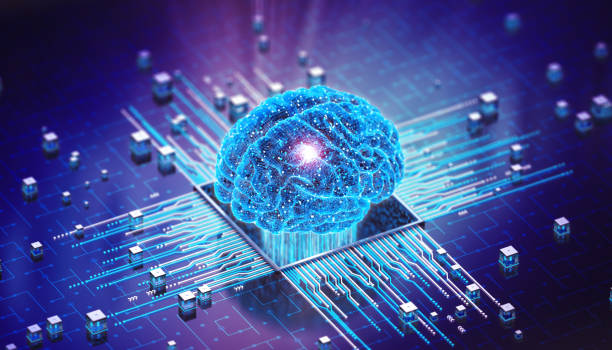Future of AI: Trends, Impacts, and Predictions
AI is a new field that is now referred to as "weak AI" (due to limitations). However, establishing strong AI is the future of artificial intelligence. AI can currently only defeat humans in a few particular skills, but it is believed that in the future, AI will be able to beat humans in all cognitive tasks. This progress comes with both good and bad outcomes, emphasizing how crucial it is to learn AI skills to manage and influence the future carefully.

Before delving into the future of AI, it's important to first grasp what Artificial Intelligence is and where it's currently at. "AI is the ability of machines or computer-controlled robots to execute tasks that are associated with intelligence.” As a result, AI is a branch of computer science whose goal is to create intelligent machines that can replicate human behavior. AI can be classified into three categories based on its capabilities: Narrow AI: It is capable of intelligently accomplishing specific tasks. AI is now in a restricted stage. General AI: Artificial General Intelligence, or AGI, is a term that refers to machines that can mimic human intelligence. Super AI: Super AI refers to self-aware AI that has cognitive capacities that are superior to humans. It is a level at which machines with cognitive abilities can perform any task that a human can.
What Did the Future of AI Look Like 10 Years Ago?
AI has sparked both dread and excitement for decades, even before the phrase was coined, as humans considered developing machines in their image. This notion that intelligent artefacts must be human-like objects blinded most of us to the truth that AI has been achieved for quite some time. While successes in surpassing human competence in human activities like chess (Hsu, 2002), Go (Silver et al., 2016), and translation (Wu et al., 2016) make headlines, AI has been part of the industrial arsenal since at least the 1980s. Then, for circuit board inspection and credit card fraud detection, production-rule or "expert" systems became mainstream technology. Similarly, ML methodologies such as genetic algorithms have long been employed for difficult computing problems like scheduling, and neural networks have been used not only to model and comprehend human learning, but also for fundamental industrial control and monitoring. Probabilistic and Bayesian methods revolutionized machine learning in the 1990s, paving the way for some of the most widely used AI technologies today, such as searching through enormous data sets. This search capability included the ability to perform semantic analysis of raw text, allowing Web users to find the content they are looking for among billions of Web pages by simply typing a few phrases (Lowe, 2001; Bullinaria and Levy, 2007).

Evolution of AI
The founder of computer science, Alan Turing, stated in 1947 that before the end of the century, the usage of words and general informed opinion would have shifted so much that one could speak about machines thinking without expecting to be disputed. It wouldn't be far-fetched to claim that he was correct. Because of the nature of discovery, where previously unthinkable things become commonplace, and the old gives way to the new, it is nearly incomprehensible. The phrase "artificial intelligence" was first used in the 1950s, even though the idea of thinking machines is centuries old, if only in mythology and legends. Since then, artificial intelligence technology has advanced and changed in several ways, much like its applications. The study of neural networks dominated the history of artificial intelligence from the 1950s to the 1970s; machine learning applications began to emerge in the next three decades, from the 1980s to the 2010s. Machine learning has given birth to the more nuanced idea of Deep Learning due to constant study, increased interest, and broad application. Additionally, with new chapters opening up every year, the initial research into AI's leap into the unknown has evolved into more of a leap of faith.
Future of AI: Trends, Impacts, and Predictions
AI is a new field that is now referred to as "weak AI" (due to limitations). However, establishing strong AI is the future of artificial intelligence. AI can currently only defeat humans in a few particular skills, but it is believed that in the future, AI will be able to beat humans in all cognitive tasks. This progress comes with both good and bad outcomes, emphasizing how crucial it is to learn AI skills to manage and influence the future carefully.
Before delving into the future of AI, it's important to first grasp what Artificial Intelligence is and where it's currently at. "AI is the ability of machines or computer-controlled robots to execute tasks that are associated with intelligence.” As a result, AI is a branch of computer science whose goal is to create intelligent machines that can replicate human behavior.
AI can be classified into three categories based on its capabilities:
- Narrow AI: It is capable of intelligently accomplishing specific tasks. AI is now in a restricted stage.
- General AI: Artificial General Intelligence, or AGI, is a term that refers to machines that can mimic human intelligence.
- Super AI: Super AI refers to self-aware AI that has cognitive capacities that are superior to humans. It is a level at which machines with cognitive abilities can perform any task that a human can.
At this time, AI is classified as Narrow AI or Weak AI, which can only do specific jobs. Self-driving automobiles, voice recognition, and other technologies are a few of its examples.
AI is already making significant strides in various fields, such as computer vision, natural language processing, and robotics. For example, computer vision can be used to detect objects in images, identify faces, and even translate text from one language to another. Natural language processing can be used to understand and generate human language, and robotics can be used to create autonomous vehicles and assist people in various tasks, such as driving, picking up objects, and reaching for places. These technologies are already being used in various industries, such as healthcare, finance, and transportation, and are expected to continue to grow in the future.
AI is also expected to have a significant impact on the economy, as it is expected to create new jobs and industries, increase productivity, and improve the quality of life for people around the world. For example, AI is expected to create new jobs in fields such as data science, machine learning, and artificial intelligence, and is expected to increase productivity in industries such as healthcare, finance, and transportation. AI is also expected to improve the quality of life for people around the world by providing new services and products that can help people live healthier, happier, and more fulfilling lives.
In conclusion, the future of AI is expected to be a transformative force that will change the world in ways that are both exciting and challenging. AI is already making significant strides in various fields, and it is expected to continue to grow in the future. As we continue to learn AI skills and develop new technologies, we can expect to see even more exciting developments in the field of artificial intelligence.
Thank you for reading this article, and I hope you have enjoyed it. If you have any questions or need further information, please don't hesitate to ask.
Sincerely,
Agniv Sarkar

John Doe
Lorem ipsum dolor sit amet, consectetur adipisicing elit. Pariatur quidem laborum necessitatibus, ipsam impedit vitae autem, eum officia, fugiat saepe enim sapiente iste iure! Quam voluptas earum impedit necessitatibus, nihil?
Reply
John Doe
Lorem ipsum dolor sit amet, consectetur adipisicing elit. Pariatur quidem laborum necessitatibus, ipsam impedit vitae autem, eum officia, fugiat saepe enim sapiente iste iure! Quam voluptas earum impedit necessitatibus, nihil?
Reply
John Doe
Lorem ipsum dolor sit amet, consectetur adipisicing elit. Pariatur quidem laborum necessitatibus, ipsam impedit vitae autem, eum officia, fugiat saepe enim sapiente iste iure! Quam voluptas earum impedit necessitatibus, nihil?
Reply
John Doe
Lorem ipsum dolor sit amet, consectetur adipisicing elit. Pariatur quidem laborum necessitatibus, ipsam impedit vitae autem, eum officia, fugiat saepe enim sapiente iste iure! Quam voluptas earum impedit necessitatibus, nihil?
Reply
John Doe
Lorem ipsum dolor sit amet, consectetur adipisicing elit. Pariatur quidem laborum necessitatibus, ipsam impedit vitae autem, eum officia, fugiat saepe enim sapiente iste iure! Quam voluptas earum impedit necessitatibus, nihil?
Reply
John Doe
Lorem ipsum dolor sit amet, consectetur adipisicing elit. Pariatur quidem laborum necessitatibus, ipsam impedit vitae autem, eum officia, fugiat saepe enim sapiente iste iure! Quam voluptas earum impedit necessitatibus, nihil?
Reply